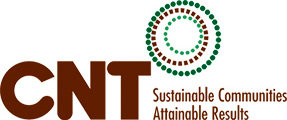
A geographic information system (GIS) consists of integrated computer hardware and software that store, manage, analyze, edit, output, and visualize geographic data. Much of this often happens within a spatial database, however, this is not essential to meet the definition of a GIS. In a broader sense, one may consider such a system also to include human users and support staff, procedures and workflows, the body of knowledge of relevant concepts and methods, and institutional organizations.
In computing, Internet geolocation is software capable of deducing the geographic position of a device connected to the Internet. For example, the device's IP address can be used to determine the country, city, or ZIP code, determining its geographical location. Other methods include examination of Wi-Fi hotspots, a MAC address, image metadata, or credit card information.

Crime mapping is used by analysts in law enforcement agencies to map, visualize, and analyze crime incident patterns. It is a key component of crime analysis and the CompStat policing strategy. Mapping crime, using Geographic Information Systems (GIS), allows crime analysts to identify crime hot spots, along with other trends and patterns.
A GIS software program is a computer program to support the use of a geographic information system, providing the ability to create, store, manage, query, analyze, and visualize geographic data, that is, data representing phenomena for which location is important. The GIS software industry encompasses a broad range of commercial and open-source products that provide some or all of these capabilities within various information technology architectures.
Hyperlocal is information oriented around a well-defined community with its primary focus directed toward the concerns of the population in that community. The term can be used as a noun in isolation or as a modifier of some other term. When used in isolation it refers to the emergent ecology of data, aggregators, publication mechanism and user interactions and behaviors which centre on a resident of a location and the business of being a resident. More recently, the term hyperlocal has become synonymous with the combined use of applications on mobile devices and GPS technology. Use of the term originated in 1991, in reference to local television news content.

OpenStreetMap (OSM) is a free, open geographic database updated and maintained by a community of volunteers via open collaboration. Contributors collect data from surveys, trace from aerial imagery and also import from other freely licensed geodata sources. OpenStreetMap is freely licensed under the Open Database License and as a result commonly used to make electronic maps, inform turn-by-turn navigation, assist in humanitarian aid and data visualisation. OpenStreetMap uses its own topology to store geographical features which can then be exported into other GIS file formats. The OpenStreetMap website itself is an online map, geodata search engine and editor.

Google Analytics is a web analytics service offered by Google that tracks and reports website traffic and also the mobile app traffic & events, currently as a platform inside the Google Marketing Platform brand. Google launched the service in November 2005 after acquiring Urchin.

The Center for Neighborhood Technology (CNT) is a non-profit organization, headquartered in Chicago, Illinois, which is committed to sustainable development and urban communities.

Web mapping or an online mapping is the process of using, creating, and distributing maps on the World Wide Web, usually through the use of Web geographic information systems. A web map or an online map is both served and consumed, thus, web mapping is more than just web cartography, it is a service where consumers may choose what the map will show.
Geobytes is a global company that provides geolocation and anti-spam software. Geobytes was incorporated in the State of Delaware, USA in 1999.
CrimeView is a crime analysis, mapping and reporting software extension to ArcGIS. It is designed for the detailed study of patterns of crime as they relate to geography and time.

Here Technologies is a Dutch multinational group specialized in mapping technologies, location data and related automotive services to individuals and companies. It is majority-owned by a consortium of German automotive companies and American semiconductor company Intel whilst other companies also own minority stakes. Its roots date back to U.S.-based Navteq in 1985, which was acquired by Finland-based Nokia in 2007. Here is currently based in The Netherlands.

MindMeister is an online mind mapping application that allows its users to visualize, share and present their thoughts via the cloud. MindMeister was launched in 2007 by MeisterLabs GmbH, a software company founded by Michael Hollauf and Till Vollmer. After 10 years in the market, MindMeister has more than 7 million users who created more than a billion ideas to date.
SpotCrime.com is a Baltimore-based company founded in October 2007 and privately owned by ReportSee, Inc. Its purpose is to provide nationwide crime information about arrests, arsons, assaults, burglaries, robberies, shootings, thefts and vandalism. SpotCrime generally maps data for any police agency which supplies open data access to crime data. Data mapped by SpotCrime is mainly sourced from police departments and news reports.
SpicyNodes was a system for displaying hierarchical data, in which a focus node displays detailed information, and the surrounding nodes represent related information, with a layout based on radial maps. It has web (Flash) and mobile (iOS) implementations. It has ended operation as of 1 January 2018.
Neogeography is the use of geographical techniques and tools for personal and community activities or by a non-expert group of users. Application domains of neogeography are typically not formal or analytical.

Nextdoor Holdings, Inc. is an American company that operates a hyperlocal social networking service for neighborhoods. The company was founded in 2008 and is based in San Francisco, California. Nextdoor launched in the United States in October 2011, and is available in 11 countries as of May 2023. Users of Nextdoor are required to submit their real names and addresses to the website. However, they do not verify the accuracy of submitted names and addresses.

An isochrone map in geography and urban planning is a map that depicts the area accessible from a point within a certain time threshold. An isochrone is defined as "a line drawn on a map connecting points at which something occurs or arrives at the same time". In hydrology and transportation planning isochrone maps are commonly used to depict areas of equal travel time. The term is also used in cardiology as a tool to visually detect abnormalities using body surface distribution.

WorldMap is a web platform for creating, displaying, analyzing, and searching spatial data and other data forms across multiple disciplines.

FME, also known as Feature Manipulation Engine, is a geospatial extract, transformation and load software platform developed and maintained by Safe Software of British Columbia, Canada. FME was first released in 1996, and evolved out of a successful bid by the founders of Safe Software, Don Murray and Dale Lutz, for a Canadian Government contract to monitor logging activities.











